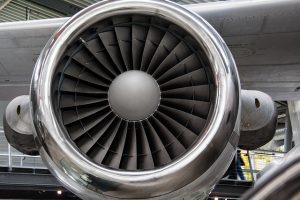
A typical jet engine has thousands of different parts, one of the most important being the air intake. Regardless of size, all jet engines have an air intake. It’s designed to funnel air into the engine so that it can be used for combustion. To learn more about air intakes and how they work, keep reading.
What Is an Air Intake?
An air intake is an engine component that’s designed to draw in surrounding air. It functions as the engine’s “mouth.”
Also known as an air inlet, the intake typically consists of a large shell-like housing. It’s located at the front of the engine. Air will enter the engine through the intake, at which point it will be used primarily for combustion.
Why Jet Engines Have an Air Intake
Whether it’s a turbofan, turbojet or a turboprop, all jet engines have an air intake. Jet engines are classified as airbreathing engines. As their name suggests, they “breathe” air. Without this otherwise simple component, jet engines wouldn’t be able to produce thrust and propel airplanes through the air.
Jet engines work by burning a mixture of fuel and air. They can’t burn fuel alone. The combustion process requires oxygen as the reactant. Therefore, jet engines — along with all other internal combustion engines — have an air intake. The air intake allows jet engines to draw in air so that it can be mixed with fuel and burned.
How a Jet Engine’s Air Intake Works
How do air intakes work exactly? They may sound complex, but air intakes are relatively simple devices. They consist of a housing that draws air into the engine. Upon entering the engine, the air will typically pass through a series of compressor blades. The compressor blades are designed to compress the air.
Compression improves the efficiency of the combustion process. It creates denser air, and by mixing with fuel, this pressurized and dense air will produce a more powerful explosion during combustion. The end result is greater thrust. Air intakes, however, must be able to deliver air with minimal loss of pressure. Any loss of pressure will reduce the engine’s ability to produce thrust.
In Conclusion
Air intakes are the entry point for air into a jet engine. Their primary function is to gather air and direct it into the engine. Once inside, the air combines with fuel for combustion, creating the thrust needed to propel airplanes forward.



